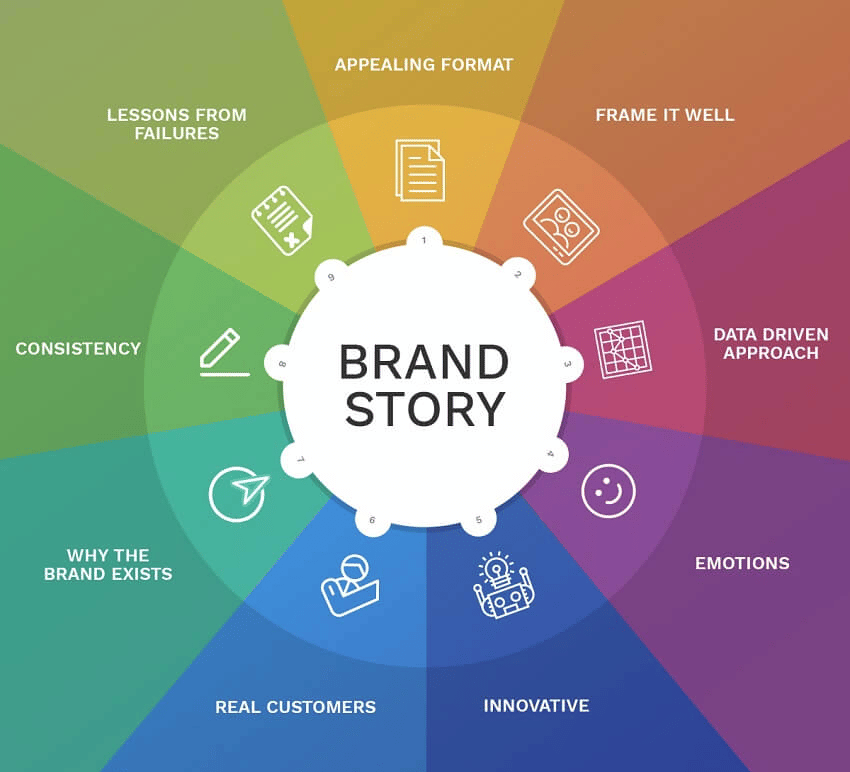Effective storytelling is an essential aspect of building your brand, engaging your audience, and driving conversions. From the dawn of time, humans have been drawn to stories as a way to learn, connect, and make sense of the world around them.
By incorporating storytelling into your marketing strategy, you can forge powerful connections with your target audience and create lasting brand loyalty.
In this comprehensive guide, we’ll delve into the art of storytelling for your brand. We’ll provide step-by-step instructions to help you create engaging narratives that resonate with your audience, leading to increased brand awareness, customer loyalty, and conversion rates.
- Understand the Key Elements of a Compelling Story
Before you begin crafting your brand story, it’s crucial to understand the key elements that make a narrative captivating.
These include:
a. A Strong Protagonist: Your protagonist is the central character in your story – often the customer, the founder of the company, or the brand itself. This character should be relatable, empathetic, and capable of evoking emotions from the audience.
b. A Clear Goal: Your protagonist should have a well-defined objective, which could be solving a problem, achieving a dream, or overcoming a challenge.
c. Conflict: Conflict is the driving force behind any good story, and your narrative should include obstacles or barriers that your protagonist must overcome to achieve their goal.
d. Resolution: The story should ultimately reach a satisfying conclusion, where the protagonist achieves their goal or learns a valuable lesson.
- Identify Your Brand’s Unique Story
To create a compelling brand story, you need to identify the unique aspects of your brand that set it apart from your competitors. This may include your company’s founding story, your mission and values, or the transformative experiences of your customers. Consider the following questions to help uncover your brand’s unique story:
a. What inspired the creation of your company or product? b. How does your brand solve problems or enrich the lives of your customers? c. What sets your brand apart from your competitors? d. What are the core values and beliefs that drive your brand?
- Develop a Storytelling Framework
Once you have identified your brand’s unique story, it’s time to structure it using a storytelling framework. This helps ensure that your narrative flows logically and maintains the audience’s interest throughout.
Some popular storytelling frameworks include:
a. The Hero’s Journey: A classic storytelling structure in which the protagonist embarks on a transformative journey, faces challenges, and ultimately returns home changed for the better.
b. The Three-Act Structure: A simple yet effective framework that divides the story into three acts – setup, confrontation, and resolution.
c. The Freytag’s Pyramid: A five-part structure that includes exposition, rising action, climax, falling action, and denouement.
- Use Emotion to Connect with Your Audience
Emotion is a powerful tool for connecting with your audience and making your story more memorable. By evoking emotions such as empathy, happiness, or even fear, you can create a lasting impression on your audience and make them more likely to engage with your brand.
Consider the following techniques to infuse emotion into your storytelling:
a. Use vivid, sensory language to help your audience visualize and feel the story. b. Share personal anecdotes, experiences, or testimonials that evoke emotions. c. Create relatable characters and situations that resonate with your audience’s own experiences.
- Incorporate Visuals to Enhance Your Story
Visuals can significantly enhance your storytelling, making it more engaging, memorable, and shareable.
Consider incorporating the following visual elements into your brand story:
a. High-quality images or photographs that complement your narrative. b. Infographics or charts that help explain complex ideas or statistics. c. Videos or animations that bring your story to life and add an extra layer of emotion. d. Branding elements such as logos, colors, and typography that reinforce your brand identity throughout your story.
- Adapt Your Storytelling for Different Platforms
In today’s digital age, your brand story will likely be shared across various platforms, such as your website, social media, and email marketing. To maximize engagement and maintain consistency, it’s essential to tailor your storytelling to suit each platform.
Consider the following tips for adapting your story to different channels:
a. Website: Create a dedicated “About Us” or “Our Story” page that tells your brand story in detail, using a mix of text, images, and video. b. Social Media: Share shorter, bite-sized versions of your story, focusing on the most captivating aspects. Use platform-specific features, such as Instagram Stories or Twitter threads, to create engaging content that resonates with your audience. c. Email Marketing: Incorporate your brand story into your email campaigns by sharing customer testimonials, behind-the-scenes content, or company news that highlights your brand values and mission.
- Measure the Impact of Your Storytelling
To determine the success of your storytelling efforts, it’s crucial to track key performance indicators (KPIs) that reflect audience engagement, brand awareness, and conversions.
Some KPIs to consider include:
a. Social media engagement, such as likes, comments, and shares. b. Website traffic, bounce rate, and time spent on your “About Us” or “Our Story” page. c. Email open rates, click-through rates, and conversions resulting from storytelling-focused campaigns.
By monitoring these KPIs, you can identify areas of improvement and refine your storytelling approach to maximize its impact on your audience and your business.
Conclusion
Mastering the art of storytelling can be a game-changer for your brand, setting you apart from your competitors and fostering strong connections with your audience.
By understanding the key elements of a compelling story, identifying your brand’s unique narrative, and adapting your storytelling for different platforms, you can create an engaging, memorable brand story that drives conversions and builds customer loyalty.
Now that you have a comprehensive understanding of brand storytelling, it’s time to unleash the power of narrative to elevate your marketing strategy and captivate your target audience.










